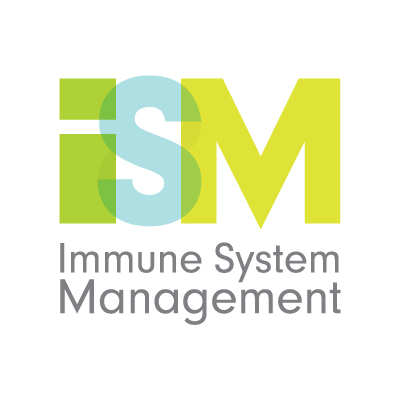General Introduction to Amino Acids
Overview
Amino acids are the chemical units or “building blocks,” that make up proteins. They also are the end products of protein digestion, or hydrolysis. Amino acids contain about 16 percent nitrogen. Chemically, this is what distinguishes them from the other two basic nutrients, sugars and fatty acids, which do not contain nitrogen.
To understand how vital amino acids are, you must understand how essential proteins are to life. It is protein that provides the structure for all living things. Every living organism, from the largest animal to the tiniest microbe, is composed of protein. And in its various forms, protein participates in the vital chemical processes that sustain life.
People often do not realize their need for amino acids, because they are not aware of how busy the human body is.
• Every second the bone marrow makes 2.5 million red cells.
• Every four days most of the lining of the gastrointestinal tract and the blood platelets are replaced.
• Most of the white cells are replaced in ten days.
• A person has the equivalent of new skin in twenty-four days and bone collagen in thirty years.
All this continuous repair work requires amino acids.
Are you amino acid deficient or have amino acid digestion problems?
Contact ISM clinic for a health consultation to develop a custom wellness program.
Proteins are a necessary part of every living cell in the body. Next to water, protein makes up the greatest portion of our body weight.
- In the human body, protein substances make up the muscles, ligaments, tendons, organs, glands, nails, hair, and many vital body fluids, and are essential for the growth of bones.
- The enzymes and hormones that catalyze and regulate all bodily processes are proteins.
- Proteins help to regulate the body’s water balance and maintain the proper internal pH. They assist in the exchange of nutrients between the intercellular fluids and the tissues, blood, and lymph. A deficiency of protein can upset the body’s fluid balance, causing edema.
- Proteins form the structural basis of chromosomes, through which genetic information is passed from parents to offspring. The genetic “code” contained in each cell’s DNA is actually information for how to make that cell’s proteins.
After digestion of protein in the stomach, amino acids are transferred to the blood. Once in the blood, the amino acids are carried by both the red blood cells and by the liquid part of the blood, called the plasma. The amino acids are thereby distributed to all the body tissues, where the various body cells take what they need to repair and reform the protein structures they need.
The blood contains amino acids at all times. Fasting does not clear them, and a high protein diet does not materially increase them. The body has a constant need for protein amino acids, and it keeps a fairly uniform balance.
(a) Amino Acids As a Protein Substrate
Proteins are chains of amino acids linked together by what are called peptide bonds. Each individual type of protein is composed of a specific group of amino acids in a specific chemical arrangement. It is the particular amino acids and the way in which they are linked together in sequence that gives the proteins that make up the various tissues their unique functions and characters. Each protein in the body is tailored for a specific need; proteins are not interchangeable.
The proteins that make up the human body are not obtained directly from the diet. Rather, dietary protein is broken down into its constituent amino acids, which the body then uses to build the specific proteins it needs. Thus, it is the amino acids rather than protein that are the essential nutrients.
(b) Amino Acids In the Body’ Metabolism
There are other amino acids that are important in metabolic functions.
- Some, such as citruline, glutathione, ornithine, and taurine, can be similar to (or byproducts of) the protein-building amino acids.
- Some act as neurotransmitters or as precursors of neurotransmitters, the chemicals that carry information from one nerve cell to another. Certain amino acids are thus necessary for the brain to receive and send messages.
- Amino acids also enable vitamins and minerals to perform their jobs properly. Even if vitamins and minerals are absorbed and assimilated by the body, they cannot be effective unless the necessary amino acids are present. For example, low levels of the amino acid tyrosine may lead to iron deficiency.
How Do We Categorize Amino Acids?
There are approximately twenty-eight commonly known amino acids that are combined in various ways to create the thousands of different types of proteins present in all living things. In the human body, the liver produces about 80 percent of the amino acids needed. The remaining 20 percent must be obtained from the diet. These are called the essential amino acids. The essential amino acids that must enter the body through diet are:
- histidine
- isoleucine
- leucine
- lysine
- methionine
- phenylalanine
- threonine
- tryptophan
- valine
The nonessential amino acids, which can be manufactured in the body from other amino acids obtained from dietary sources, include:
- alanine
- glutamine
- asparagines
- glycine
- citrulline
- ornithine
- cysteine
- proline
- cystine
- serine
- gamma-amino butyric acid
- taurine
- glutamic acid
- tyrosine
The fact that they are termed “nonessential” does not mean that they are not necessary, only that they need not necessarily be obtained through the diet because the body can manufacture them as needed. And nonessential amino acids can become “essential” under certain conditions. For instance, the nonessential amino acids cysteine and tyrosine are made from the essential amino acids methionine and phenylalanine. If methionine and phenylalanine are not available in sufficient quantities, cysteine and tyrosine then become essential in the diet.
The Amino Acid / Protein Assembly Process
The processes of assembling amino acids to make proteins, and of breaking down proteins into individual amino acids for the body’s use, are continuous ones. When we need more enzyme proteins, the body produces more enzyme proteins; when we need more cells, the body produces more proteins for cells. These different types of proteins are produced as the need arises. Should the body become depleted of its reserves of any of the essential amino acids, it would not be able to produce the proteins that require those amino acids. An inadequate supply of even one essential amino acid can hinder the synthesis, and reduce body levels, of necessary proteins. Further, all of the essential amino acids must be present simultaneously in the diet in order for the other amino acids to be utilized.
How could such a situation occur? More easily than you might think. Many factors can contribute to deficiencies of essential amino acids, even if you eat a well-balanced diet that contains enough protein. Impaired absorption, infection, trauma, stress, drug use, age, and imbalances of other nutrients can all affect the availability of essential amino acids in the body. Insufficient intake of vitamins and minerals, especially vitamin C, can interfere with the absorpbon of amino acids in the lower part of the small intestines. Vitamin B6 is needed also, for the transport of amino acids in the body.
If your diet is not properly balanced-that is, if it fails to supply adequate amounts of the essential amino acids sooner or later, this will become apparent as some type of physical disorder. This does not mean, however, that eating a diet containing enormous amounts of protein is the answer. In fact, it is unhealthy. Excess protein puts undue stress on the kidneys and the liver, which are faced with processing the waste products of protein metabolism. Nearly half of the amino acids in dietary protein are transformed into glucose by the liver and utilized to provide needed energy to the cells. This process results in a waste product, ammonia. Ammonia is toxic to the body, so the body protects itself by having the liver turn the ammonia into a much less toxic compound, urea, which is then carried through the bloodstream, filtered out by the kidneys, and excreted.

